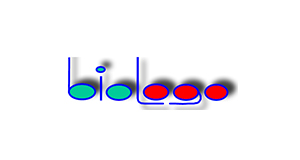Cytokeratin 10
Cytokeratin 10, IgG1, Host: Mouse, Monoclonal, Clone: DE-K10
Artikelnummer
BILCK110
Verpackungseinheit
1 ml
Hersteller
BioLogo
Verfügbarkeit:
wird geladen...
Preis wird geladen...
Clone: DE-K10.
Background: CK10 stains supra-basal cells in the epidermis and in different squamous epithelia of internal organs (vagina, exocervix, tongue, palate). In skin cells of sweat glands and hair roots are labelled. Simple epithelia, glandular epithelia and transitional epithelia of the urinary tract are negative. The antibody may be used for differential diagnosis of squamous epithelial carcinoma, which are Cytokeratin 10 positive, while adenocarcinoma are negative. Cytokeratins are a group of water insoluble filament proteins, which are constituents of the cytoskeleton of epidermal cells and other epithelial cells. By gel electrophoretic analysis up to now 20 different cytokeratins have been characterized. They have been divided into basic and acid subfamilies and may also be distinguished by their molecular weights and their tissue distribution. The most frequently used nomenclature has been published by R. Moll et al. (1982). 56,5 kDa Cytokeratin according to CK10 (Moll et al. 1982).
Positive Control: Squamous epithelial carcinoma (Vulva).
Immunogen: Extract of human epidermis.
Purification Method: Antibody solution in stabilizing phosphate buffer pH 7.3. Contains 0.09 % sodium azide**. The volume is sufficient for at least 100 immunohistochemical tests (100 µl working solution / test). Use appropriate antibody diluent e.g. BIOLOGO Art. No. PU002, if further dilution is required.
References: 1. Moll R., Franke W.W., Schiller D.L., Geiger B., and Krepler R. (1982) The Catalog of Human Cytokeratins: Patterns of Expression in Normal Epithelia, Tumors and Cultured Cells. Cell 31; 11 ff. 2. Ivanyi D., Ansink A., Groeneveld E., Hageman P.C., Mooi W.J., and Heintz A.P.M. (1989) New monoclonal antibodies recognizing epidermal differentiation-associated keratins in formalin-fixed, paraffin-embedded tissue. Keratin 10 expression in carcinoma of the vulva. J. Pathol. 159; 7-12. 3. Ivanyi D., Groeneveld E., Van Doornewaard G., Mooi W.J., and Hageman P.C. (1990) Keratin subtypes in carcinomas of the uterin cervix: implications for histiogenesis and differential diagnosis. Cancer Res. 50; 5143-5152. 4. Mommers JM, van Rossum MM, van Erp PE, van De Kerkhof PC. (2000) Changes in keratin 6 and keratin 10 (co-)expression in lesional and symptomless skin of spreading psoriasis. Dermatology 2000;201(1):15-20.
UniProt: P13645.
Caution: *These antibodies are intended for in vitro research use only. They must not be used for clinical diagnostics and not for in vivo experiments in humans or animals. ** The preservative sodium azide is known to be poisonous and potentially hazardous to health. It should be handled only by trained staff. Despite of the product's low azide concentration it must be handled with care. Dispose according to regional rules!
Background: CK10 stains supra-basal cells in the epidermis and in different squamous epithelia of internal organs (vagina, exocervix, tongue, palate). In skin cells of sweat glands and hair roots are labelled. Simple epithelia, glandular epithelia and transitional epithelia of the urinary tract are negative. The antibody may be used for differential diagnosis of squamous epithelial carcinoma, which are Cytokeratin 10 positive, while adenocarcinoma are negative. Cytokeratins are a group of water insoluble filament proteins, which are constituents of the cytoskeleton of epidermal cells and other epithelial cells. By gel electrophoretic analysis up to now 20 different cytokeratins have been characterized. They have been divided into basic and acid subfamilies and may also be distinguished by their molecular weights and their tissue distribution. The most frequently used nomenclature has been published by R. Moll et al. (1982). 56,5 kDa Cytokeratin according to CK10 (Moll et al. 1982).
Positive Control: Squamous epithelial carcinoma (Vulva).
Immunogen: Extract of human epidermis.
Purification Method: Antibody solution in stabilizing phosphate buffer pH 7.3. Contains 0.09 % sodium azide**. The volume is sufficient for at least 100 immunohistochemical tests (100 µl working solution / test). Use appropriate antibody diluent e.g. BIOLOGO Art. No. PU002, if further dilution is required.
References: 1. Moll R., Franke W.W., Schiller D.L., Geiger B., and Krepler R. (1982) The Catalog of Human Cytokeratins: Patterns of Expression in Normal Epithelia, Tumors and Cultured Cells. Cell 31; 11 ff. 2. Ivanyi D., Ansink A., Groeneveld E., Hageman P.C., Mooi W.J., and Heintz A.P.M. (1989) New monoclonal antibodies recognizing epidermal differentiation-associated keratins in formalin-fixed, paraffin-embedded tissue. Keratin 10 expression in carcinoma of the vulva. J. Pathol. 159; 7-12. 3. Ivanyi D., Groeneveld E., Van Doornewaard G., Mooi W.J., and Hageman P.C. (1990) Keratin subtypes in carcinomas of the uterin cervix: implications for histiogenesis and differential diagnosis. Cancer Res. 50; 5143-5152. 4. Mommers JM, van Rossum MM, van Erp PE, van De Kerkhof PC. (2000) Changes in keratin 6 and keratin 10 (co-)expression in lesional and symptomless skin of spreading psoriasis. Dermatology 2000;201(1):15-20.
UniProt: P13645.
Caution: *These antibodies are intended for in vitro research use only. They must not be used for clinical diagnostics and not for in vivo experiments in humans or animals. ** The preservative sodium azide is known to be poisonous and potentially hazardous to health. It should be handled only by trained staff. Despite of the product's low azide concentration it must be handled with care. Dispose according to regional rules!
| Artikelnummer | BILCK110 |
|---|---|
| Hersteller | BioLogo |
| Hersteller Artikelnummer | CK110 |
| Green Labware | Nein |
| Verpackungseinheit | 1 ml |
| Mengeneinheit | STK |
| Reaktivität | Human, Rat (Rattus), Cow (Bovine) |
| Klonalität | Monoclonal |
| Methode | Immunohistochemistry (frozen), Immunohistochemistry (paraffin) |
| Isotyp | IgG1 |
| Wirt | Mouse |
| Produktinformation (PDF) | Download |
| MSDS (PDF) | Download |

 English
English







